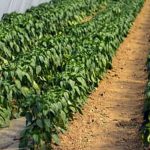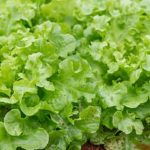The presence of black walnut trees in the vicinity of vegetable gardens can have a significant impact on plant growth and productivity. This article explores the unique relationship between black walnut trees and vegetable gardens, shedding light on the allelopathic effects of these trees and the ways in which gardeners can mitigate their influence. The focus will be on understanding juglone, a toxin found in black walnut trees, and its impact on various vegetable crops.
One of the key aspects to consider is selecting the right vegetable garden plants that can coexist with black walnut trees. By identifying juglone-resistant vegetables and plants that can thrive near these trees, gardeners can ensure a healthy and productive garden despite their presence. Additionally, implementing techniques to manage juglone contamination and creating physical barriers around the garden are essential strategies for protecting vegetable crops from the allelopathic effects of black walnut trees.
Furthermore, maintaining soil quality is crucial for supporting healthy vegetable growth near black walnut trees. Understanding the impact of these trees on soil pH and nutrient availability, as well as implementing soil amendments and cultivation practices to improve soil quality, are essential steps in ensuring the success of a vegetable garden in close proximity to black walnut trees.
By exploring these topics and more, this article aims to provide valuable insights for maintaining a harmonious coexistence between black walnut trees and thriving vegetable gardens.
Selecting the Right Vegetable Garden Plants to Coexist With Black Walnut Trees
When planning a vegetable garden near black walnut trees, it is crucial to select plants that are resistant to juglone, the toxin produced by black walnut trees. Here are some vegetable garden plants that can thrive in close proximity to black walnut trees:
– Juglone-resistant vegetables: Some vegetables have developed natural resistance to juglone and can coexist with black walnut trees without being negatively affected. These include squash, onions, beets, carrots, and asparagus.
– Plants that can thrive near black walnut trees: Certain plants are not only resistant to juglone but also complement the growth of black walnut trees. Consider planting berries such as raspberries and blueberries, or herbs like mint and chives in your vegetable garden near black walnut trees.
Tips for Choosing the Best Vegetable Garden Crops:
1. Research juglone-resistant varieties: Look for specific cultivars of vegetables and plants that have been bred for their tolerance to juglone. These varieties are more likely to thrive when planted near black walnut trees.
2. Rotate your crops: To minimize the impact of juglone on your vegetable garden, practice crop rotation by varying the location of your crops each growing season. This will allow the soil to recover from juglone contamination over time.
3. Consider container gardening: If you’re unsure about the impact of black walnut trees on your soil, consider growing certain vegetables in containers or raised beds. This will give you better control over the soil composition and reduce potential exposure to juglone.
By carefully selecting the right vegetable garden plants and implementing smart gardening practices, you can create a thriving and productive garden despite the presence of black walnut trees nearby. Pay attention to plant compatibility and soil health to ensure a successful coexistence between your vegetable garden and black walnut trees.
Managing Juglone Contamination in Vegetable Gardens
Implementing Techniques to Mitigate the Effects of Juglone
One of the biggest challenges of having a vegetable garden near black walnut trees is dealing with juglone contamination. To mitigate the effects of this toxin on your vegetable crops, there are several techniques that you can implement.
One effective method is to regularly amend your soil with organic matter such as compost, which can help to break down juglone and minimize its impact on your vegetables. Additionally, implementing raised bed gardening can also be beneficial as it allows for better control over soil quality and drainage, reducing the exposure to juglone.
Understanding the Signs of Juglone Contamination and How to Address Them Effectively
It’s important for gardeners to recognize the signs of juglone contamination in their vegetable gardens. Symptoms may include stunted growth, yellowing leaves, or wilting plants. If you observe these signs, it’s crucial to take action promptly to address the issue.
One way to do so is by regularly monitoring your vegetable plants and removing any affected ones as soon as symptoms appear in order to prevent further spread of juglone contamination. Proper disposal of contaminated plants is essential to prevent recontamination of the soil.
Seeking Professional Guidance
If you’re unsure about how to effectively manage juglone contamination in your vegetable garden near black walnut trees, seeking professional guidance can be incredibly beneficial. Consulting with a local agricultural extension office or horticultural expert can provide you with valuable insights and tailored recommendations for managing juglone in your specific gardening situation. By leveraging their expertise, you can gain a better understanding of effective strategies for mitigating juglone’s impact on your vegetable garden.
Creating a Barrier Between Black Walnut Trees and Vegetable Gardens
The presence of black walnut trees in close proximity to vegetable gardens can pose a challenge to gardeners due to the allelopathic effects of the trees. Black walnut trees release juglone, a toxin that can negatively impact neighboring plants, including vegetable garden crops. One effective strategy for protecting vegetable gardens from the allelopathic effects of black walnut trees is to create a physical barrier between the two.
Exploring Physical Barriers
One option for creating a barrier between black walnut trees and vegetable gardens is to install a physical barrier, such as a fence or wall. This helps to prevent the roots of black walnut trees from encroaching on the vegetable garden area, reducing the risk of juglone contamination in the soil.
When choosing a physical barrier, it is important to select materials that are durable and resistant to rot, as well as tall enough to prevent overhanging branches from affecting the garden.
Root Barriers
Another approach is to use root barriers to prevent the spread of juglone from black walnut tree roots into the vegetable garden soil. Root barriers can be installed underground around the perimeter of the garden area, creating a barrier that prevents tree roots from infiltrating and releasing juglone into the vegetable garden space. This can help protect vulnerable vegetables and plants from the harmful effects of juglone while allowing them to thrive in a healthier environment.
By implementing physical barriers and root barriers, gardeners can effectively protect their vegetable gardens from juglone contamination caused by nearby black walnut trees. These protective measures can help create a more sustainable and harmonious coexistence between the beauty of black walnut trees and the productivity of thriving vegetable gardens.
Enhancing Soil Quality for Vegetable Gardens Near Black Walnut Trees
The presence of black walnut trees in proximity to vegetable gardens can have a significant impact on the soil quality for growing crops. Black walnut trees produce juglone, a natural toxin that can inhibit the growth of certain plants, including many common vegetable garden crops. This allelopathic effect can lead to decreased soil fertility and nutrient availability, posing challenges for gardeners looking to maintain healthy and productive vegetable gardens.
When considering how to enhance soil quality for vegetable gardens near black walnut trees, it is essential to understand the specific impact of juglone on the soil. Juglone alters the pH levels of the soil and reduces the availability of essential nutrients like phosphorus and magnesium. As a result, gardeners may need to implement targeted soil amendments and management practices to counteract these effects and create an optimal growing environment for their vegetables.
One effective technique for improving soil quality in this context is the use of organic matter, such as compost or well-rotted manure. Adding organic materials can help buffer the effects of juglone by neutralizing pH levels and increasing nutrient content in the soil. Additionally, incorporating gypsum into the soil can help mitigate juglone’s impact on pH levels while providing calcium, an essential nutrient for plant growth.
Furthermore, implementing raised beds or container gardening can provide an alternative growing environment for vegetables near black walnut trees. By using uncontaminated soil in raised beds or containers, gardeners can bypass the challenges associated with juglone-contaminated ground while still enjoying a thriving vegetable garden. Ultimately, prioritizing soil quality enhancement efforts will play a crucial role in supporting healthy plant growth despite the presence of black walnut trees.
| Soil Enhancement Technique | Details |
|---|---|
| Organic Matter Addition | Including compost or well-rotted manure to increase nutrient content and neutralize pH levels |
| Gypsum Application | Utilizing gypsum to mitigate juglone’s impact on pH levels while providing essential calcium |
| Raised Beds/Container Gardening | Creating uncontaminated growing environments for vegetables near black walnut trees |
Maintaining a Healthy and Productive Vegetable Garden Near Black Walnut Trees
Cultivating a vegetable garden near black walnut trees presents its challenges, but with proper care and attention, it is possible to maintain a healthy and productive garden. The allelopathic effects of black walnut trees, caused by the release of juglone, can have detrimental impacts on neighboring plants, including vegetable crops. However, by implementing specific cultivation practices and care tips, it is possible to mitigate these effects and create a thriving garden.
When managing a vegetable garden near black walnut trees, it is essential to choose juglone-resistant vegetables and plants that can tolerate the toxin produced by the trees. Some examples are tomatoes, onions, and asparagus. These plants have been known to coexist successfully with black walnut trees without being negatively affected by juglone. Additionally, implementing proper soil amendments and techniques to improve soil quality can help support healthy vegetable growth despite the presence of black walnut trees.
Incorporating raised beds or containers for your vegetable garden can also be an effective strategy for minimizing the impact of juglone contamination from black walnut trees. These physical barriers can prevent the roots of your vegetable crops from coming into contact with the toxic substances produced by the trees.
Additionally, choosing suitable locations within your garden layout that are further away from the root system of black walnut trees can also help reduce the likelihood of negative effects on your vegetable crops.
| Impact | Tips |
|---|---|
| Choose juglone-resistant vegetables | Tomatoes, onions, asparagus |
| Implement soil amendments | To improve soil quality |
| Incorporate raised beds or containers | To minimize impact of juglone contamination |
Harvesting and Enjoying Vegetables Grown Near Black Walnut Trees
When it comes to enjoying the fruits of your labor in a vegetable garden near black walnut trees, there are a few key considerations to keep in mind. The presence of these trees can have an impact on the flavor and characteristics of the vegetables grown nearby. However, with proper attention and care, you can still harvest and indulge in delicious produce from your garden.
Here are some tips for proper harvesting and consuming vegetables to ensure quality and safety when grown near black walnut trees:
- Monitor the Growth: Keep a close eye on the growth and development of your vegetable plants. Check for any signs of wilting, yellowing leaves, or stunted growth, as these could be indicators of juglone contamination.
- Harvest Carefully: When it comes time to harvest your vegetables, do so with care. Inspect each piece of produce closely for any signs of damage or discoloration. For leafy greens, such as lettuce or spinach, be sure to thoroughly wash and inspect each leaf before consumption.
- Enjoy Mindfully: When it’s time to enjoy the fruits – or rather, vegetables – of your labor, savor each bite mindfully. Take note of any unique flavors or characteristics that may have been influenced by the presence of the black walnut tree.
By following these guidelines, you can ensure that the vegetables harvested from your garden near black walnut trees are safe and enjoyable to consume.
Remember that while black walnut trees may pose certain challenges for vegetable gardens, with proper management techniques and attentive care, it is possible to maintain a healthy and productive garden in their vicinity.
Protecting the Beauty of Black Walnut Trees While Maintaining a Vegetable Garden
In conclusion, the coexistence of black walnut trees and vegetable gardens can be achieved with careful planning and management. Understanding the allelopathic effects of black walnut trees, particularly the impact of juglone on neighboring plants, is crucial for selecting the right vegetable garden crops. By choosing juglone-resistant vegetables and implementing techniques to mitigate juglone contamination, gardeners can create a thriving vegetable garden in close proximity to black walnut trees.
Additionally, creating physical barriers and improving soil quality can further protect vegetable gardens from the negative effects of black walnut trees. By maintaining a healthy and productive vegetable garden near black walnut trees, while also preserving the beauty and health of the trees themselves, a harmonious and sustainable landscape can be achieved.
Ultimately, with proper care and attention, it is possible to enjoy the unique flavors and characteristics of vegetables grown near black walnut trees while protecting both the beauty of these trees and the productivity of the vegetable garden. It is important for gardeners to embrace strategies that promote coexistence and sustainability in order to maintain a thriving vegetable garden alongside majestic black walnut trees.
Frequently Asked Questions
What Vegetables Will Grow Under a Black Walnut Tree?
Some vegetables that can grow under a black walnut tree include asparagus, beans, beets, carrots, corn, melons, and squash. These plants are less sensitive to the juglone toxin produced by black walnut trees.
How Far Is Safe Enough From Black Walnut Trees to Plant Tomatoes?
When planting tomatoes near black walnut trees, it’s recommended to keep them at least 50 feet away from the tree. This distance helps minimize the exposure of tomato plants to juglone, which can negatively affect their growth and development.
How Far to Plant Vegetables From Walnut Tree?
To safely plant vegetables near a walnut tree, it’s best to maintain a distance of at least 50 feet for sensitive vegetables such as tomatoes, peppers, potatoes, and eggplant. However, some less sensitive vegetables can be planted closer to the tree with caution.

If you’re looking to get into vegetable gardening, or are just looking for some tips on how to make your current garden better, then you’ve come to the right place! My name is Ethel and I have been gardening for years. In this blog, I’m going to share with you some of my best tips on how to create a successful vegetable garden.





